
CLIFF
ELECTRIC SAUNA HEATER 3–12
SAUNA ELEKTRIKERIS 13–22
SÄHKÖKIUKAAN 23–32
ELEKTRISCHER SAUNAOFEN 33–42
ЭЛЕКТРОКАМЕНКИ 43–52
ELEKTRISKT BASTUAGGREGAT 53–62
STUFA ELETTRICA PER SAUNA 63–72
PIEC ELEKTRYCZNY DO SAUNY 73–82
ELEKTRICKÁ SAUNOVÁ PEC 83–92
ELEKTRICKÝOHŘÍVAČ 93–102
POÊLE ÉLECTRIQUE 103-112
[email protected] www.huum.eu


3
CLIFF
ELECTRIC SAUNA HEATER
Installation and operation manual
NB! The following instructions for electrical works must be carried out
by a certied electrician.
The product must be installed as a complete set. The HUUM CLIFF
electric sauna heater delivery set contains:
• electric heater;
• installation and operation manual for the electric heater;
• 2 blocks for disassembling the slats of the sauna stove.
NB! The electric heater requires a control panel and stones.

4
THINGS TO CHECK BEFORE INSTALLATION
• Does the output (kW) match the volume (m) of the sauna room?
See Table 1.
• In case there are any uninsulated brick, tile or glass walls in the
sauna room, an additional volume of 1,5 m should be added to
the sauna room for each such square meter of the wall.
• The suitable output of the heater will be determined based on
Table 1.
• The producer’s warranty guarantee is invalid if the heater and
sauna room have been dimensioned incorrectly!
• Minimal safe distances between the sauna room’s ceiling and
walls in view of installing the electric heater are listed in Table 1.
* CLIFF Mini 3,5 is aached to the wall with a special bracket
See CLIFF Mini 3,5 heater data in the table below.
4
6 X 40
A A
B
H
3,5 *
Min. 1200
875

5
Table 1 Output
kW
Room
m3
Weight
kg A
mm B
mm H
mm
Width/
Depth
mm
Fuse
A
Power
cable
N × mm2
CLIFF
Mini 3,5 3,5 3,56 15 60
390
975
270/160 16 3 × 2,5
CLIFF 6 6 5–10 16 60
390
975
270/270 10 5 × 2,5
CLIFF 9 9 9–15 16
240
750
975
270/270 16 5 × 2,5
CLIFF 10,5 10,5 1017 17
240
750
975
270/270 16 5 × 2,5
INSTALLATION
Positioning the heater
• The heater must be positioned in such a way that there is a safe
distance between flammable materials and the external surfaces
of the heater. See Figure.
• In installing the heater, it must be prevented that people could
have physical contact with the heater or that other dangerous
situations could emerge during the heating process.
• CLIFF Mini holds approximately 60 kg of stones and CLIFF holds
approximately 75 kg.
• The input of the power cable is located on the boom cover of
the heater.
Connecting the heater to the power supply
• Only a certified electrician is allowed to connect the heater to the
power supply.
• A rubber insulated SIHFJB cable or an equivalent cable must be
used as the connection cable.
• It is recommended to connect the unit to the mains without an
earth-leakage circuit breaker.
• The maximum current intensity in the cross-sectional area of the
cable and circuit breaker are listed in Table 1.

6
NB! It is forbidden to use a non-heat-resistant cable with PVC isolation
as the power cable. The joint box must be waterproof and it must be
located up to 50 cm from the oor.
CLIFF 3,5 kW
CLIFF 6 kW
CLIFF 9 kW
CLIFF 10,5 kW
230V 1~ 400V 3~
230V 1~
• Open the cover of the heater’s electrical box.
• Aach the power cable on the terminal block according to the
circuit diagram.
• Close the cover.
• Fix the cable on the output with a cable strap.
Fiingthestones
Upon stacking the stones, one should monitor that the heating
elements are not bent and that there is a suicient air circulation
around the heater elements.
• The stones must be washed clean before laying.
• When the stones have been stacked too close to each other, the
heating elements may overheat (= shorter useful life) and slow the
heating of the sauna.
• Stones with a diameter of 3–6 cm are suitable for the heater.
• The stones on the external surface of the heater must fully cover
the heating elements. The heating elements must not be visible.
• Using ceramic stones in the CLIFF heater is allowed upon the
user’s responsibility.
ATTENTION! Too sparsely lled stone container causes re hazard!

7
Removing the ribs of the heater
For fiing the stones, all of the ribs are removable by props A.
1. On the boom of the heater, release the nuts of the
threaded rod by 5 mm.
2. Push the props between the ribs of the heater.
3. Release the rib from both ends.
4. Carefully remove the rib from the joint, first from the right end
and then the left.
NB! Pull the rib away from the heater without using force or turning the
rib – avoid bending the tenons!
A A
1.
2.
3.
4.

8
The rib under the removed rib is instantly removable in a similar
fashion.
The procedure is reversed for puing the ribs back. The rib must be
aached to the joint from the left end first and then from the right.
First-time use of the sauna heater
Before switching the heater on, the insulation resistance might prove
to be lower than the standard. The reason for that is the moisture
seeped into the insulating layer during storage in the warehouse and
transportation.
The moisture evaporates in 1–2 hours of heating the electric heater.
Controlling the heater
All certified control panels may be used in controlling the heater.
The output of the heater must remain in the interval determined by
the control panel’s producer.
You can find the right remote and other accessories from HUUM’s
selection of products.
Guard rails
• It is recommended to construct a guard rail around the heater.
We recommend using materials with low heat capacity and bad
thermal conductivity for the guard rail.
• Upon using flammable materials, it is necessary to leave the
specified minimal safety clearances between the heater and
flammable constructions.
NB! Installing the heater closer to ammable constructions than at the
distance of the minimal required protection belt may cause re hazard.

9
SAUNA ROOM
Wall materials and insulating the sauna room
In a sauna with electric heating, all massive heat accumulating wall
surfaces (brick, glass brick, rendering etc.) must be insulated to use
the electric heater with a regular output.
The following sauna wall and ceiling construction is considered
to be suiciently insulated:
• a carefully installed insulation wool layer of 100 mm (min. 50 mm);
• the construction is damp proofed with taped aluminium paper or
other reflective material;
• there is a 10 mm air gap between the damp protection and
boarding;
• a light wooden board that is about 12–16 mm thick has been used
for interior finishing;
• there is an air gap of at least 5 mm on the edge of the ceiling
panels at the upper part of the wall panelling.
In order to use the heater with a regular output, it would be practical
to bring the ceiling of the sauna lower (min. height of sauna room
2200 mm) so that the volume of the sauna room diminishes. The
ceiling is insulated with an insulation laer at least 100 mm thick and
boarded according to the method described above.
Wood should be used to cover internal surfaces; an exception may be
made for heat resistant walls in the vicinity of the heater.
ATTENTION! Insulating the heat barrier has to be approved by the re
inspector. Insulating ues in use is forbidden!

10
NB! Covering the walls or oor with light protective material, for
example, mineral tiles that are installed directly on the surface of the
walls or ceiling might cause the dangerous overheating of the wall or
ceiling material.
Floor of the sauna room
The heater stones in use crumble due to temperature changes.
The pieces and pebbles breaking away from the heater stones are
washed on the sauna’s floor with the steam-making water. Hot stone
parts may damage plastic flooring under and near the heater.
Heater stone particles and sprays from the steam-making water (e.g.,
with iron content) may absorb into the light joints of a tile floor. In
order to avoid aesthetic damage (caused by the reasons mentioned
above), ceramic tiles and dark joint filler should be used under and
around the heater.
Ventilation of the sauna
In order to assure a suicient oxygen supply and fresh air, the sauna’s
ventilation must be as eicient as possible. It is advisable to direct
the fresh air into the sauna room from above the heater stones. As an
alternative, the fresh air may be directed in from under the heater.
The air inlet must be equipped with an adjustable valve. The exhaust
valve must be installed in the opposite wall from the heater at least
20 cm above the inlet valve.

11
WARNING!
• Before turning on the electric heater, always check the sauna
room and heater.
• The heater may be used only when it has been correctly filled
with stones.
• Do not cover the heater—this causes fire hazard.
• Do not touch a working heater, it causes burns.
• Ventilating the sauna room incorrectly may dry the wood too
much and cause a fire hazard in the sauna.
• Only tap water may be used for making steam.
• Never make steam by using a water hose.
• There must always be at least 5 cm of fireproof heat insulation
under the boarding.
• Sauna doors must always open outward.
• Do not use the sauna for any other purpose than it is meant to be
used.
• Do not install more than one heater in the sauna room.
• Undiluted sauna essences etc. may ignite when poured directly
on the stones.
• Do not leave small children in the sauna unaended.
• Sudden cooling after staying in the steam room is not
recommended for people with poor health. Consult a doctor.
• Enjoy the sauna as long as it is comfortable for you.
• Keep this information in a secure place.
• The product’s warranty guarantee does not extend to heating
elements.

12
WARRANTY
Buyer is obligated to read user manual and follow instructions and
requirements presented. Damage to the product caused by not
following instructions and requirements will void warranty.
If any defects are found on the product, where manufacturer can be
blamed, then buyer has the right to demand fixing or replacing the
product. Demands must be made not later than 5 years after buying
the product. Purchase receipt needs to be presented when warranty
demands are made.
Warranty Terms
• Warranty applies only to electric heaters that have been used
according to the manual
• NB! Warranty does not cover heating elements. They are
considered as consumable parts.
• Warranty does not cover wear that occurs from natural usage.
• Warranty does not cover defects or wear caused by planned use.
• Warranty does not imply when:
• damage or defects are caused by transportation or other
actions not controlled by manufacturer;
• product has been damaged by carelessness or overload;
• product has not been installed correctly;
• product has been modified in any way;
• warranty period is over;
• product is not complete.
Find the latest updates on our website www.huum.eu

13
CLIFF
SAUNA ELEKTRIKERIS
Paigaldus- ja kasutusjuhend
NB! Käesolevas juhendis kirjeldatud elektritöid tohib teostada vaid
sertitseeritud elektrik.
Toode peab olema paigaldatud komplektselt. HUUM CLIFF elektri-
kerise tarnekomplekti kuulub:
• elektrikeris;
• elektrikerise paigaldus– ja kasutusjuhend;
• 2 kerise liistude lahtivõtmise klotsi.
NB! Elektrikeris vajab juhtpulti ja kive.

14
ENNE PAIGALDAMIST KONTROLLIDA
• Kas kerise võimsus (kW) vastab leiliruumi ruumalale (m)? Vaata
tabel 1.
• Juhul, kui leiliruumis leidub isoleerimata tellis-, kahhel- või
klaasseinu, tuleb iga taolise seina ruutmeetri kohta arvestada
1,5 m täiendavat leiliruumi ruumala.
• Selle järgi määratakse tabeli 1 abil kindlaks kerise sobilik võimsus.
• Tootja garantii ei kehti, kui keris ja leiliruum on valesti
dimensioneeritud!
• Leiliruumi lae ja seinte minimaalsed ohutuskaugused elektrikerise
paigutamisel on toodud tabelis 1 ja joonisel.
* CLIFF Mini 3,5 kinnitatakse seina külge spetsiaalse kronsteini abil
Vaata CLIFF Mini 3,5 kerise andmeid allolevast tabelist.
4
6 X 40
A A
B
H
3,5 *
Min. 1200
875

15
Tabel 1 Võimsus
kW Ruum
m3Kaal
kg A
mm B
mm H
mm
Laius/
Sügavus
mm
Kaitse
A
Toite-
kaabel
N × mm2
CLIFF
Mini 3,5 3,5 3,56 15 60 390 975 270/160 16 3 × 2,5
CLIFF 6 6 5–10 16 60 390 975 270/270 10 5 × 2,5
CLIFF 9 9 9–15 16 240 750 975 270/270 16 5 × 2,5
CLIFF 10,5 10,5 1017 17 240 750 975 270/270 16 5 × 2,5
PAIGALDAMINE
Kerise paigutamine
• Keris tuleb paigutada nii, et oleks tagatud ohutud vahekaugused
süivate materjalidega.
• Kerise paigaldusega peab olema välistatud inimese ja kerise
füüsiline kontakt kütmise ajal või muude ohtlike olukordade
tekkimine.
• CLIFF Mini mahutab orienteeruvalt 60 kg kive ning CLIFF mahutab
orienteeruvalt 75 kg kive.
• Toitekaabli sisendid asuvad kerise põhjakaanel.
Elektrivõrguga ühendamine
• Kerist tohib elektrivõrguga ühendada ainult elektrik.
• Ühenduskaablina tuleb kasutada kummiisolatsiooniga SIHFJB
kaablit või sellele võrdväärset.
• Kaabli ristlõikepindala ja kaitsme maksimaalne voolutugevus on
toodud tabelis 1.
• Soovitatav on seade ühendada vooluvõrku ilma rikkevoolu
kaitsmelülitita.

16
NB! Kerise toitekaablina on keelatud kasutada kuumust
mietaluvat isolatsiooniga kaablit. Harutoos peab olema veekindel
ning paiknema põrandast kuni 50 cm kõrgusel.
CLIFF 3,5 kW
CLIFF 6 kW
CLIFF 9 kW
CLIFF 10,5 kW
230V 1~ 400V 3~
230V 1~
• Avage kerise elektrikarbi kaas.
• Ühendage toitekaabel vastavalt elektriskeemile klemmliistule.
• Sulgege kaas.
• Fikseerige kaabel kaabliklambrisse.
Kivide paigaldamine
Kivide ladumisel tuleb jälgida, et küekehad ei painduks ja oleks
tagatud piisav õhuringlus.
• Enne kivide ladumist soovitame kivid puhtaks pesta.
• Liiga tihedalt laotud kivid põhjustavad küekehade ülekuumenemise
(= lühem kasutusaeg) ja aeglustavad sauna kuumenemist.
• Kerisele sobivad kivid, mille läbimõõt on 3–6 cm.
• Kerise välispinnal peavad kivid küekehasid täielikult katma.
Küekehasid ei tohi näha olla.
• Kiviruumi välispind laotakse võimalikult tihedalt, küekehade pind ei
tohi paista.
• Keraamiliste kivide kasutamine CLIFF kerises on lubatud omal
vastutusel.
TÄHELEPANU! Liiga hõredalt täidetud kiviruum tekitab tuleohtu!

17
Kerise ribide avamine
Kivide paigaldamiseks on kõiki ribid eemaldatavad tugede A abil.
1. Vabastage kerise põhjas keermelati mutrid 5 mm võrra.
2. Lükake toed kerise ribide vahele.
3. Ribi vabastatakse mõlemast küljest.
4. Eemaldage ribi ühenduskohast eevaatlikult, esmalt
parempoolsest otsast ja seejärel vasakpoolsest otsast.
NB! Tõmmake ribi otse kerisest eemale ilma jõudu kasutamata ning
keeramata – vältige tappide painutamist!
A A
1.
2.
3.
4.

18
Samamoodi on koheselt teisaldatav ka eemaldatud ribi all olev ribi.
Ribide tagasipanekul toimub kogu protseduur vastupidises järje-
korras. Ribi tuleb kinnitada ühenduskohta esmalt vasakust otsast ja
seejärel paremast otsast.
Kerise esmakordne kasutamine
Esmakordsel kerise sisselülitamisel võib isolatsioonitakistus ajutiselt
osutuda normist väiksemaks. Selle põhjuseks on laos säilitamise ja
transportimise ajal isolatsioonikihi sisse imbunud niiskus.
Niiskus aurustub elektrikerise 12 tunnise kuumutamise jooksul.
Kerise juhtimine
Kerise juhtimisel võib kasutada sertifitseeritud termokontrolliga
juhtpulti. Kerise võimsus peab jääma juhtimisseadme tootja poolt
määratud töövõimsuse vahemikku.
Sobiva juhtpuldi ja ka muud tarvikud leiate HUUMi tootevalikust.
Kaitsepiirded
• Soovituslik on rajada kerise ümber kaitsepiire. Kaitsepiirde
materjalina soovitame kasutada väikese soojusmahutavuse ja
halva soojusjuhtivusega materjale.
• Süivate materjalide kasutamisel tuleb kindlasti järgida
eenähtud minimaalseid ohutusvahemikke kerise ja süivate
konstruktsioonide vahel.
NB! Kerise paigaldamine süivatele konstruktsioonidele lähemale,
kui näevad ee minimaalsed ohutuskujad, võib põhjustada tuleohtu.

19
LEILIRUUM
Leiliruumi isoleerimine ja seinamaterjalid
Elektriküega saunas tuleb kõik massiivsed soojust akumuleerivad
seinapinnad (tellis, klaastellis, krohv jne) normaalse võimsusega
kerise kasutamiseks isoleerida.
Piisavalt isoleerituks võib pidada sauna sellist seina- ja
laekonstruktsiooni, kus:
• hoolikalt paigaldatud isolatsioonivilla kiht on 100 mm (min 50
mm);
• konstruktsiooni niiskustõkkeks on teibitud alumiiniumpaber või
muu peegeldav materjal;
• niiskustõkke ja voodrilaua vahel on 10 mm õhkvahe;
• siseviimistluseks on kerge u 12–16 mm paksune puidust
voodrilaud;
• seinavoodri ülaosas laepaneelide piiril on vähemalt 5 mm
õhkvahe.
Kerise võimsuse optimeerimiseks on otstarbekas tuua sauna
lage allapoole (min sauna kõrgus 2200 mm), millega leiliruumi
kubatuur väheneb. Lagi isoleeritakse vähemalt 100 mm paksuselt) ja
vooderdatakse ülal kirjeldatud viisil.
Sisepindade kaeks tuleb kasutada puitu, erandiks võivad olla
kuumuskindlad seinad kerise vahetus läheduses.
TÄHELEPANU! Soojamüüride isoleerimine tuleb kooskõlastada
tuletõrjeinspektoriga. Kasutatavate lõõride isoleerimine on keelatud!
NB! Seinte või lae katmine tulekindla materjali, näit. mineraalplaadiga,
õhkvaheta, otse seina või lae pinnale, võib põhjustada
seina- või laematerjalide ohtliku ülekuumenemise.

20
Leiliruumi põrand
Temperatuurimuudatustest tingituna kasutatavad kerisekivid
murenevad. Kividest eralduvad tükid ja peened kivid uhutakse koos
leiliveega sauna põrandale. Kuumad kiviosad võivad kerise all ja
läheduses kahjustada plastkaega põrandaid.
Kerisekivide ja leilivee pritsmed (näit. rauasisaldus) võivad imenduda
plaatpõranda heledasse vuuki. Eelmainitust tingituna tuleks
esteetiliste kahjustuste ärahoidmiseks kerise all ja ümbruses
kasutada keraamilisi plaate ja tumedat vuugitäidet.
Sauna ventilatsioon
Küllaldase hapnikuvarustuse ja värske õhu tagamiseks peab sauna
ventilatsioon olema võimalikult tõhus. Värske õhk on soovitatav
juhtida leiliruumi kerisekivide kohale. Alternatiivina võib värske õhu
juhtida kerise alla.
Sissetõmbeava tuleb varustada reguleeritava klapiga. Väljalaskeklapp
paigaldada sisselaskeklapist vastasseina vähemalt 20 cm võrra
kõrgemale. Soovituslik on varustada leiliruumi ülaosasse tuulutus-
klapp lõpptuulutuse tarvis.
La page est en cours de chargement...
La page est en cours de chargement...
La page est en cours de chargement...
La page est en cours de chargement...
La page est en cours de chargement...
La page est en cours de chargement...
La page est en cours de chargement...
La page est en cours de chargement...
La page est en cours de chargement...
La page est en cours de chargement...
La page est en cours de chargement...
La page est en cours de chargement...
La page est en cours de chargement...
La page est en cours de chargement...
La page est en cours de chargement...
La page est en cours de chargement...
La page est en cours de chargement...
La page est en cours de chargement...
La page est en cours de chargement...
La page est en cours de chargement...
La page est en cours de chargement...
La page est en cours de chargement...
La page est en cours de chargement...
La page est en cours de chargement...
La page est en cours de chargement...
La page est en cours de chargement...
La page est en cours de chargement...
La page est en cours de chargement...
La page est en cours de chargement...
La page est en cours de chargement...
La page est en cours de chargement...
La page est en cours de chargement...
La page est en cours de chargement...
La page est en cours de chargement...
La page est en cours de chargement...
La page est en cours de chargement...
La page est en cours de chargement...
La page est en cours de chargement...
La page est en cours de chargement...
La page est en cours de chargement...
La page est en cours de chargement...
La page est en cours de chargement...
La page est en cours de chargement...
La page est en cours de chargement...
La page est en cours de chargement...
La page est en cours de chargement...
La page est en cours de chargement...
La page est en cours de chargement...
La page est en cours de chargement...
La page est en cours de chargement...
La page est en cours de chargement...
La page est en cours de chargement...
La page est en cours de chargement...
La page est en cours de chargement...
La page est en cours de chargement...
La page est en cours de chargement...
La page est en cours de chargement...
La page est en cours de chargement...
La page est en cours de chargement...
La page est en cours de chargement...
La page est en cours de chargement...
La page est en cours de chargement...
La page est en cours de chargement...
La page est en cours de chargement...
La page est en cours de chargement...
La page est en cours de chargement...
La page est en cours de chargement...
La page est en cours de chargement...
La page est en cours de chargement...
La page est en cours de chargement...
La page est en cours de chargement...
La page est en cours de chargement...
La page est en cours de chargement...
La page est en cours de chargement...
La page est en cours de chargement...
La page est en cours de chargement...
La page est en cours de chargement...
La page est en cours de chargement...
La page est en cours de chargement...
La page est en cours de chargement...
La page est en cours de chargement...
La page est en cours de chargement...
La page est en cours de chargement...
La page est en cours de chargement...
La page est en cours de chargement...
La page est en cours de chargement...
La page est en cours de chargement...
La page est en cours de chargement...
La page est en cours de chargement...
La page est en cours de chargement...
La page est en cours de chargement...
La page est en cours de chargement...
La page est en cours de chargement...
La page est en cours de chargement...
La page est en cours de chargement...
La page est en cours de chargement...
-
 1
1
-
 2
2
-
 3
3
-
 4
4
-
 5
5
-
 6
6
-
 7
7
-
 8
8
-
 9
9
-
 10
10
-
 11
11
-
 12
12
-
 13
13
-
 14
14
-
 15
15
-
 16
16
-
 17
17
-
 18
18
-
 19
19
-
 20
20
-
 21
21
-
 22
22
-
 23
23
-
 24
24
-
 25
25
-
 26
26
-
 27
27
-
 28
28
-
 29
29
-
 30
30
-
 31
31
-
 32
32
-
 33
33
-
 34
34
-
 35
35
-
 36
36
-
 37
37
-
 38
38
-
 39
39
-
 40
40
-
 41
41
-
 42
42
-
 43
43
-
 44
44
-
 45
45
-
 46
46
-
 47
47
-
 48
48
-
 49
49
-
 50
50
-
 51
51
-
 52
52
-
 53
53
-
 54
54
-
 55
55
-
 56
56
-
 57
57
-
 58
58
-
 59
59
-
 60
60
-
 61
61
-
 62
62
-
 63
63
-
 64
64
-
 65
65
-
 66
66
-
 67
67
-
 68
68
-
 69
69
-
 70
70
-
 71
71
-
 72
72
-
 73
73
-
 74
74
-
 75
75
-
 76
76
-
 77
77
-
 78
78
-
 79
79
-
 80
80
-
 81
81
-
 82
82
-
 83
83
-
 84
84
-
 85
85
-
 86
86
-
 87
87
-
 88
88
-
 89
89
-
 90
90
-
 91
91
-
 92
92
-
 93
93
-
 94
94
-
 95
95
-
 96
96
-
 97
97
-
 98
98
-
 99
99
-
 100
100
-
 101
101
-
 102
102
-
 103
103
-
 104
104
-
 105
105
-
 106
106
-
 107
107
-
 108
108
-
 109
109
-
 110
110
-
 111
111
-
 112
112
-
 113
113
-
 114
114
-
 115
115
-
 116
116
dans d''autres langues
- italiano: HUUM 4744103010332 Guida d'installazione
- Deutsch: HUUM 4744103010332 Installationsanleitung
- slovenčina: HUUM 4744103010332 Návod na inštaláciu
- polski: HUUM 4744103010332 Instrukcja instalacji
- eesti: HUUM 4744103010332 paigaldusjuhend
- svenska: HUUM 4744103010332 Installationsguide
Documents connexes
-
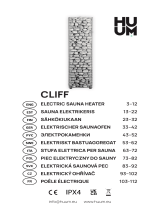 HUUM 4744103010332 Guide d'installation
HUUM 4744103010332 Guide d'installation
-
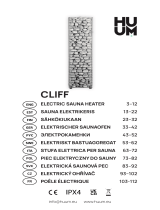 HUUM Cliff Electric Sauna Heater Manuel utilisateur
HUUM Cliff Electric Sauna Heater Manuel utilisateur
-
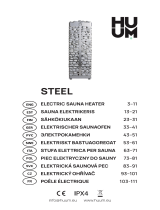 HUUM 4744103010233 Manuel utilisateur
HUUM 4744103010233 Manuel utilisateur
-
HUUM DROP Electric Sauna Heater Manuel utilisateur
-
HUUM HIVE Manuel utilisateur
-
HUUM HIVE Manuel utilisateur
-
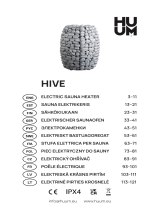 HUUM HIVE Electric Sauna Heater Manuel utilisateur
HUUM HIVE Electric Sauna Heater Manuel utilisateur
-
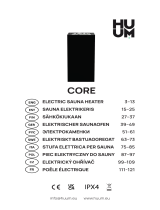 HUUM CORE ELECTRIC SAUNA HEATER Manuel utilisateur
HUUM CORE ELECTRIC SAUNA HEATER Manuel utilisateur
-
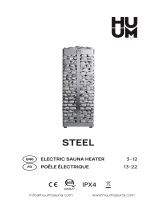 HUUM H1006L03 Manuel utilisateur
HUUM H1006L03 Manuel utilisateur
-
HUUM Hive Heat Sauna Heater Manuel utilisateur
Autres documents
-
HARVIA HPC904XW Instructions for Installation and Use
-
HARVIA QUBE-240 Manuel utilisateur
-
HARVIA SW60 Instructions For Installation And Use Manual
-
Anslut 023781 Manuel utilisateur
-
Tylö Sense Pure Mode d'emploi
-
Sentiotec Safety device Manuel utilisateur
-
Tylö TY-61001034 Guide d'installation
-
Tylö 61001180 Mode d'emploi
-
HARVIA FORTE Instructions Manual
-
HARVIA SIRIUS SC1212 Le manuel du propriétaire

























































































































